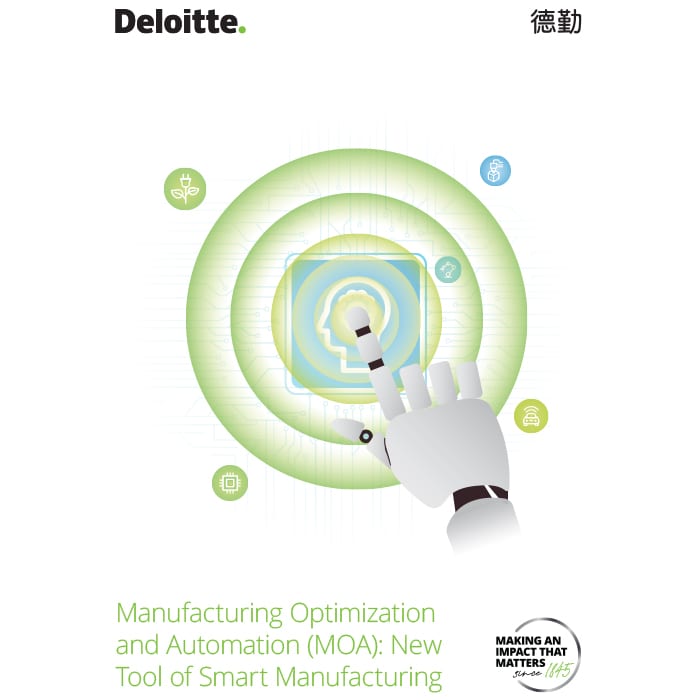Article

Manufacturing Optimization and Automation (MOA): New Tool of Smart Manufacturing
Published date: June 22, 2022
As industrial internet, big data analysis, artificial intelligence and other technologies are deeply integrated with advanced manufacturing technologies, it is predicted by GSMA Intelligence that the global smart manufacturing market will reach USD576.2 billion in 2028. Facing the combined impacts of technological innovation and the pandemic, the manufacturing industry is accelerating its transition and upgrading to smart manufacturing. The post-pandemic era signifies that for a long time to go, the circulation of manpower, resources and goods will still be subject to limitations. From design to manufacturing, and from production line management to daily operation, how will the entire process of the manufacturing industry match each and every link of the supply chain? The only and optimal solution is to speed up automated and intelligent arrangement.
Smart manufacturing has entered the critical “window of opportunity” and demonstrates the trends of automation, digitalization, large-scale development, ecosystem collaboration and green development. At the same time, manufacturing enterprises are subject to multiple challenges on the road of intelligent transition:
- Labor shortage and supply chain instability challenge enterprises to improve agility.
- Enterprises should shorten product launching cycle while improving the product quality and the security of product lifecycle.
- Enterprises should guarantee the security of industrial data, and improve the productization and system integration ability of the technology.
- Requirements for the connection and coordination between manufacturing enterprises and upstream and downstream sectors are elevated, and risks to the security of digital supply network are increased.
- ESG compliance requirements become stricter, but face information collection and analysis constraints.
Based on the original optimization concept of the manufacturing industry, MOA of the manufacturing industry suggested in this report puts more emphasis on looking for the best alternative based on data analysis and insight, and on achieving precise execution by virtue of digital twin, deep learning and intelligent equipment. Its core lies in more efficient and sustainable optimization capability free from human intervention. MOA not only can cut back on manpower, energy consumption and equipment operation and maintenance costs, but also has updated the definition and framework of commercial value. It demonstrates the features of Industry 4.0 solutions, such as interconnectivity, decentralized decision-making, data transparency, technology support and continuous optimization, and will speed up the transition of manufacturing enterprises to the self-adaption stage—the most mature stage of Industry 4.0.
By combining the challenges faced by the manufacturing industry and the analysis from the three perspectives of financial indicators, operational indicators and performance improvement, the report presents the commercial value of MOA as efficiency optimization, quality optimization, cost optimization, supply chain optimization and brand optimization.
The report also expounds on a set of application cases where start-ups empower MOA technologies, and demonstrates how the optimized and innovative solutions create value. For instance, as an innovator in full-stack smart manufacturing technologies, SmartMore not only firstly raised the concept of MOA (Manufacturing Optimization and Automation), but also applies it widely in multiple sectors such as automobile making, consumer electronics, new energy and semiconductors. Several benchmarking cases developed and executed by SmartMore were included in this white paper as well.
